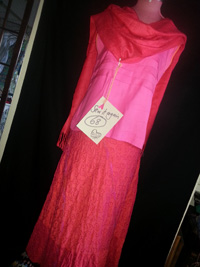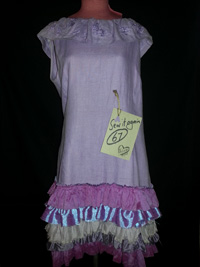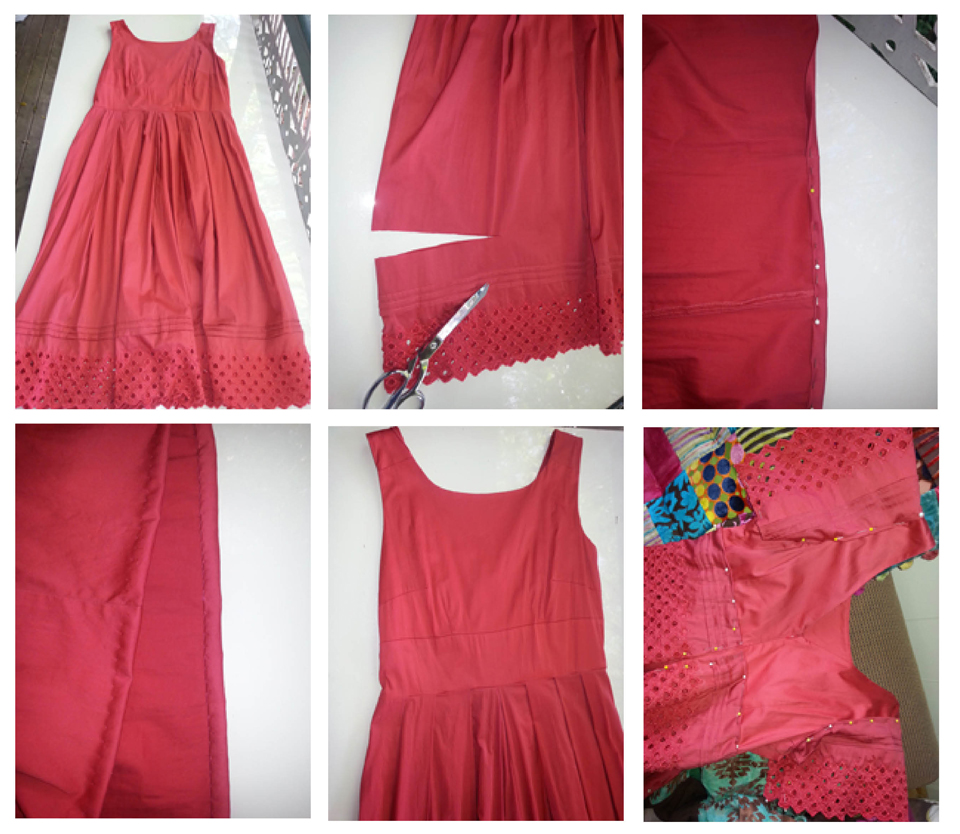
This op-shop silk top was resewn for a better fit then teamed with home-made silk skirt, and a scarf to finish.
My excuse for having wardrobes of accumulated natural-fibre clothing is I’ve been rescuing it from op shops for a song. Older clothing is often better quality and more interesting than new garments, which are increasingly being made from synthetic fibres.
Statistics show that average apparel fibre consumption in 1992 was 7kg per person and that increased to 11kg each by 2010 – an 80% increase in less than two decades. During that time, most of the increase is in synthetic fibres made from petroleum with natural fibres consumption increasing only marginally.
Each year, we are each adding 11kg more clothing to the global stockpile – with much of the reject stuff heading to landfill. What does 11kg of clothing look like?
I’m giving a presentation later this month on this topic and bagging up old stuff a friend was tossing out as props so we can eyeball what an individual year of new clothing looks like for one person. Globally, we multiply those bags by 7.2 billion to get a year’s worth of clothing consumption. Continue reading







